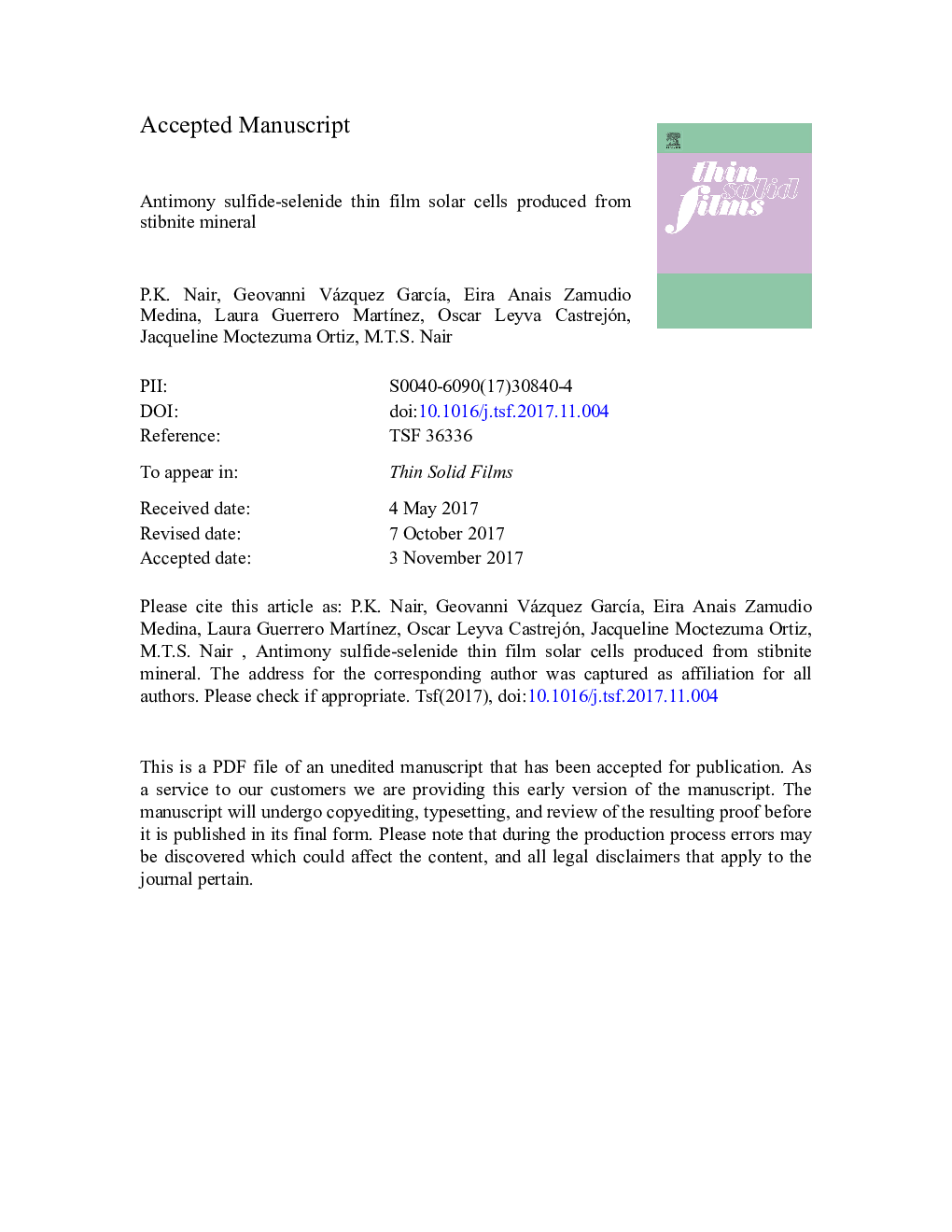| Article ID | Journal | Published Year | Pages | File Type |
|---|---|---|---|---|
| 8033230 | Thin Solid Films | 2018 | 23 Pages |
Abstract
Stibnite (Sb2S3) is a major mineral of antimony, which occurs as large crystals often with minor encrustations of other minerals. Locally sourced powdered stibnite containing some quartzite (SiO2) and ferrosilite (FeSiO3) has been used in this work as evaporation source for vacuum deposition of thin film solar cells. The added minerals were left as residue in the crucible and did not incorporate into the Sb2S3 thin film. To stibnite powder was added Sb2Se3 powder prepared in our laboratory as chemical precipitate. Source mixtures of different weight - by - weight (w/w) ratios gave thin films of chemical composition Sb2SxSe3 â x and optical band gap (Eg) within 1.38 eV (Sb2Se3) - 1.88 eV (Sb2S3). Solar cells of SnO2:F/CdS (100 nm)/Sb2S3(250 nm)/C-Ag prepared by using stibnite as evaporation source gave under standard conditions, open circuit voltage (Voc), 0.668 V; short circuit current density (Jsc), 6.95 mA/cm2; and conversion efficiency (η), 1.62%. For a 2:1 (w/w) mixture of stibnite:Sb2Se3, solar cell of Sb2S2.14Se0.86 (Eg 1.61 eV) was obtained with Voc, 0.562 V; Jsc, 13.53 mA/cm2 and η, 4.03%. For 1:5 (w/w) mixture, solar cell of Sb2S0.5Se2.5 (Eg 1.44 eV) gave Voc, 0.443 V; Jsc, 22.31 mA/cm2 and η, 4.24%. Electrical conductivity of the Sb2SxSe3 â x absorber films in the dark increased from 10â 8 to 10â 6 Ωâ 1 cmâ 1 and their photoconductivity, from 10â 6 to 10â 5 Ωâ 1 cmâ 1 as the composition changed from Sb2S3 to Sb2SxSe3 â x and Sb2Se3. Direct use of an abundant mineral as the evaporation source in thin film solar cell technology is a novelty.
Related Topics
Physical Sciences and Engineering
Materials Science
Nanotechnology
Authors
P.K. Nair, Geovanni Vázquez GarcÃa, Eira Anais Zamudio Medina, Laura Guerrero MartÃnez, Oscar Leyva Castrejón, Jacqueline Moctezuma Ortiz, M.T.S. Nair,
